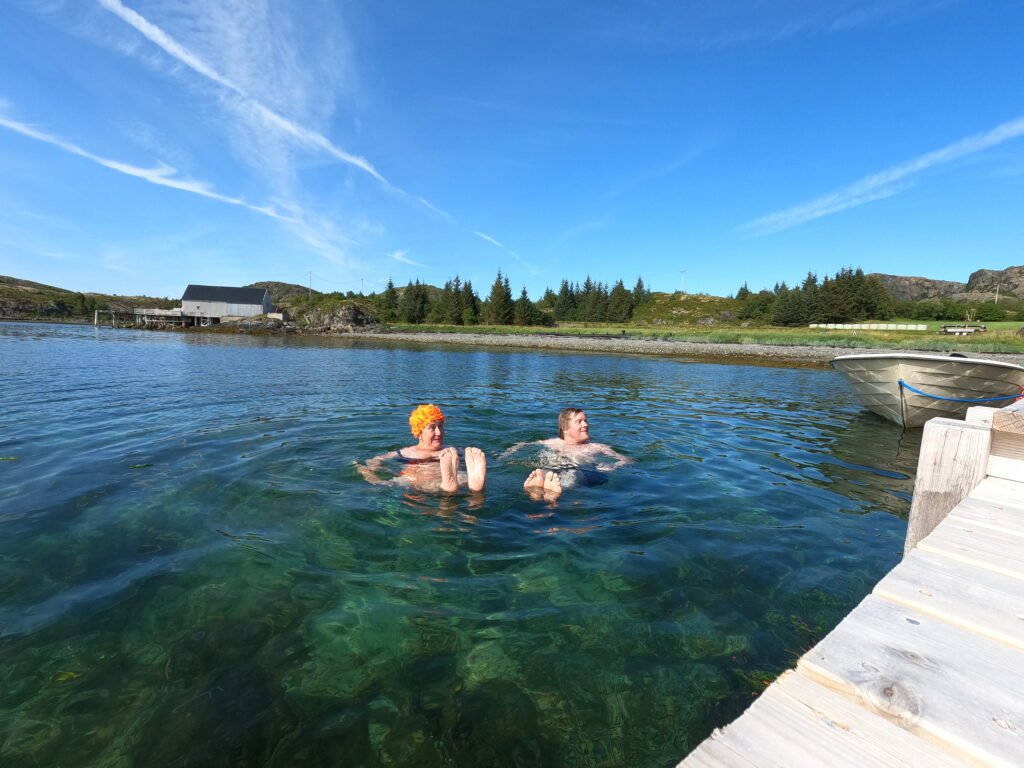Just after the ice age, the sea level at the Trøndelag coast was up to 100 meters higher than today. At Leka you can find a cave 78 m above sea level, Solsemgrotta, formed by a fault that was excavated by the sea, while this was the beach zone.
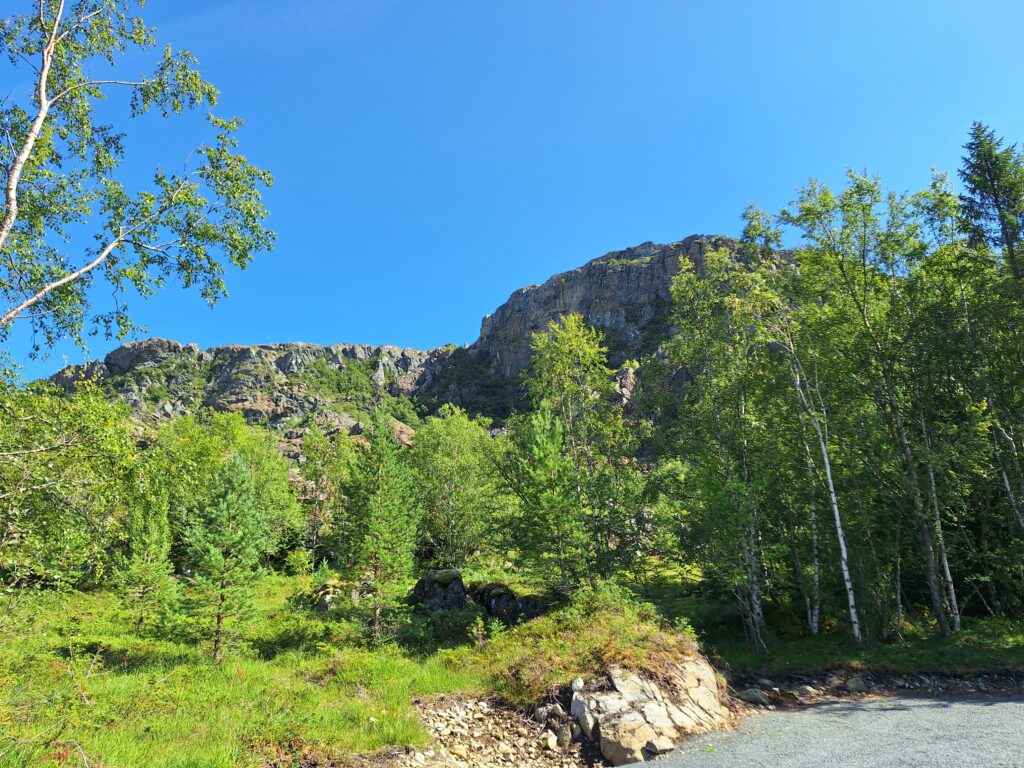
In 1912, the cave was explored for the first time by 3 young men from Solsem. The cave is approximately 40 meters long, 5 meters wide and 8 meters high. Once inside, they discovered cave paintings in the dark part, the first cave art found in Norway until then. The boys behaved well after the discovery, by notifying the Science Museum in Trondheim. Later the cave was examined by archaeologists Theodor Petersen and Claus Hjelte. They made drawings of the cave and the cave paintings, and collected many objects for further investigation.
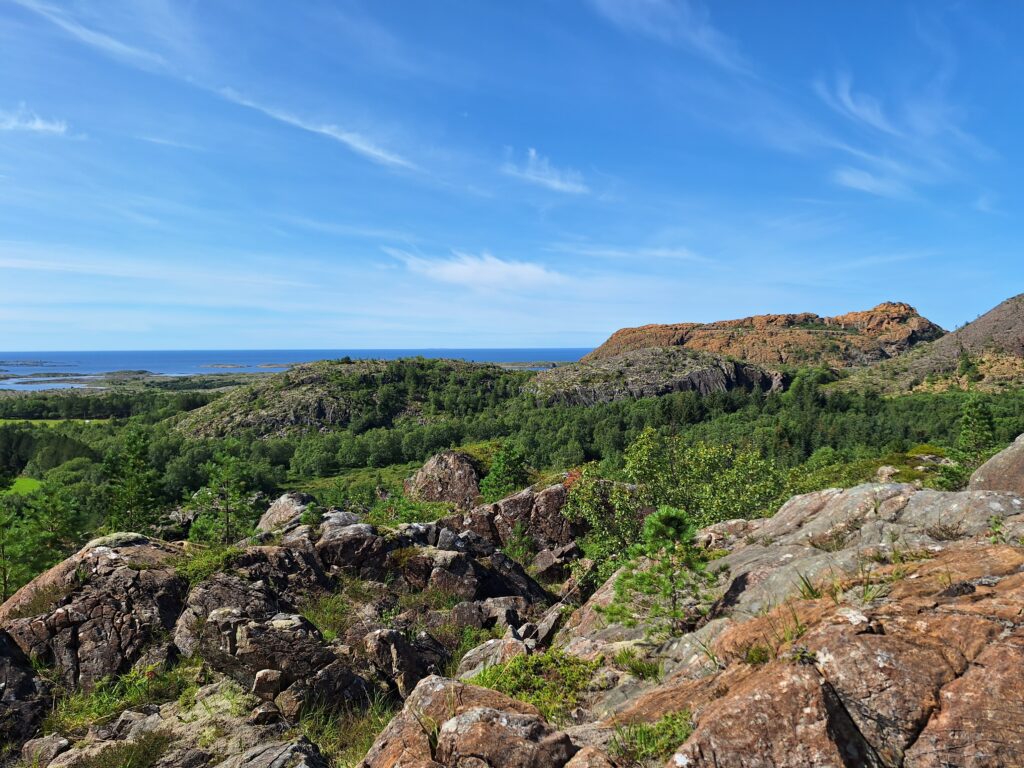
Remains of many different animals were found, a total of 1,868 bones. From catching and hunting, they found shells from clams and snails as well as bones from seals, cod, flounder, herring, black bream, gray grouse, puffins, vultures, sea eagles, goshawks and rock doves, but also livestock bones from cattle, sheep, goats and horses. The cave has clearly been used for a long time, from the Bronze Age (1800 BD) to the Viking Age (1000 AD).
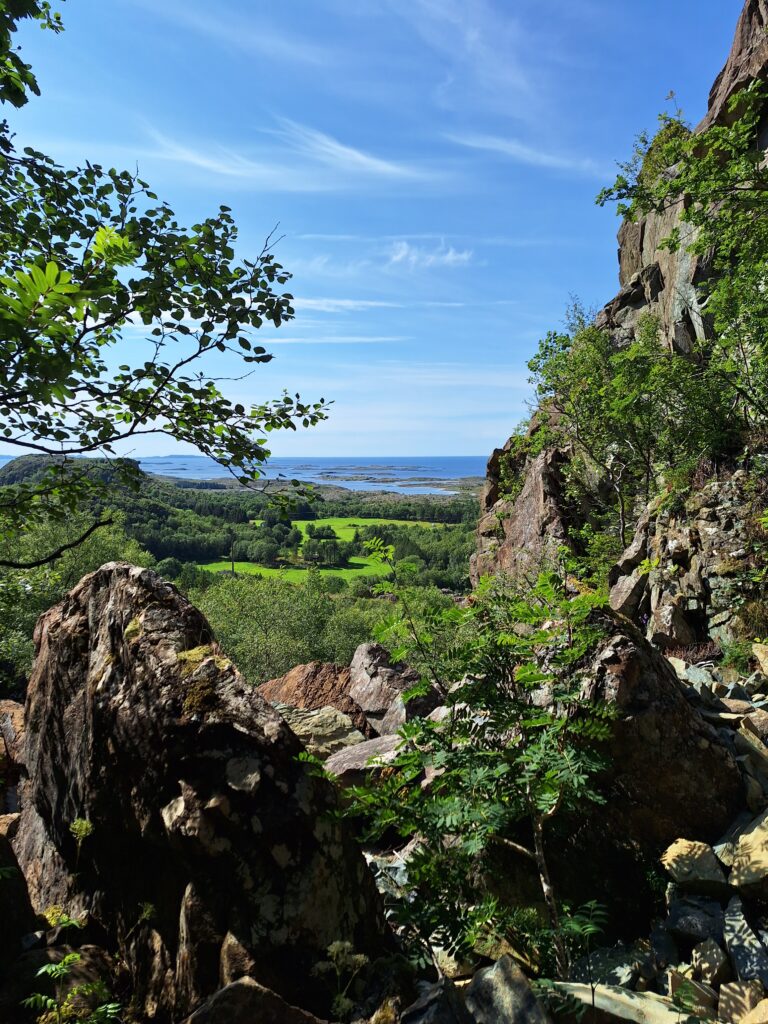
The use of the cave has been much debated. We have many caves in Norway that have been used as shelters. Solsemgrotta, however, has a difficult access. The path up to the cave is today a rocky trip, but was of course shorter in older times, when the sea level was higher.
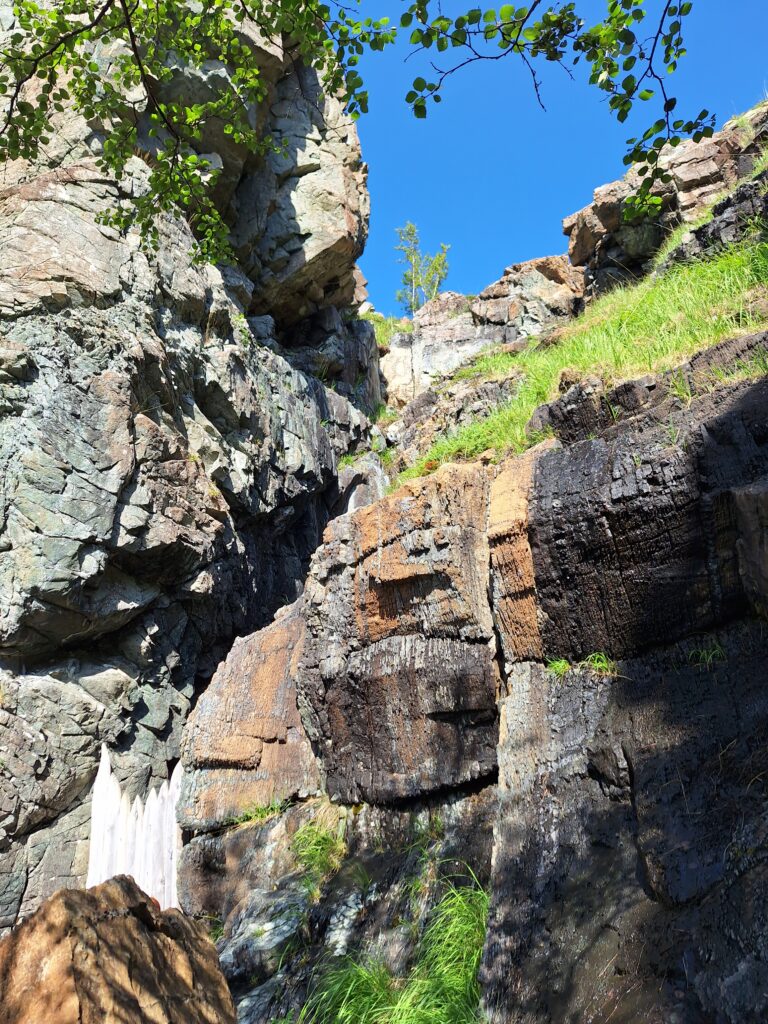
The problem is the slope from the cave entrance. There is a steep drop of 3 meters into the cave before it flattens out, today equipped by stairs and ropes. In older times you must have needed a ladder and/or ropes, which would have been very impractical with children. The conclusion is therefore that the cave must have been used for rituals. The remains of two people are explained by the fact that they were brought there after their death.
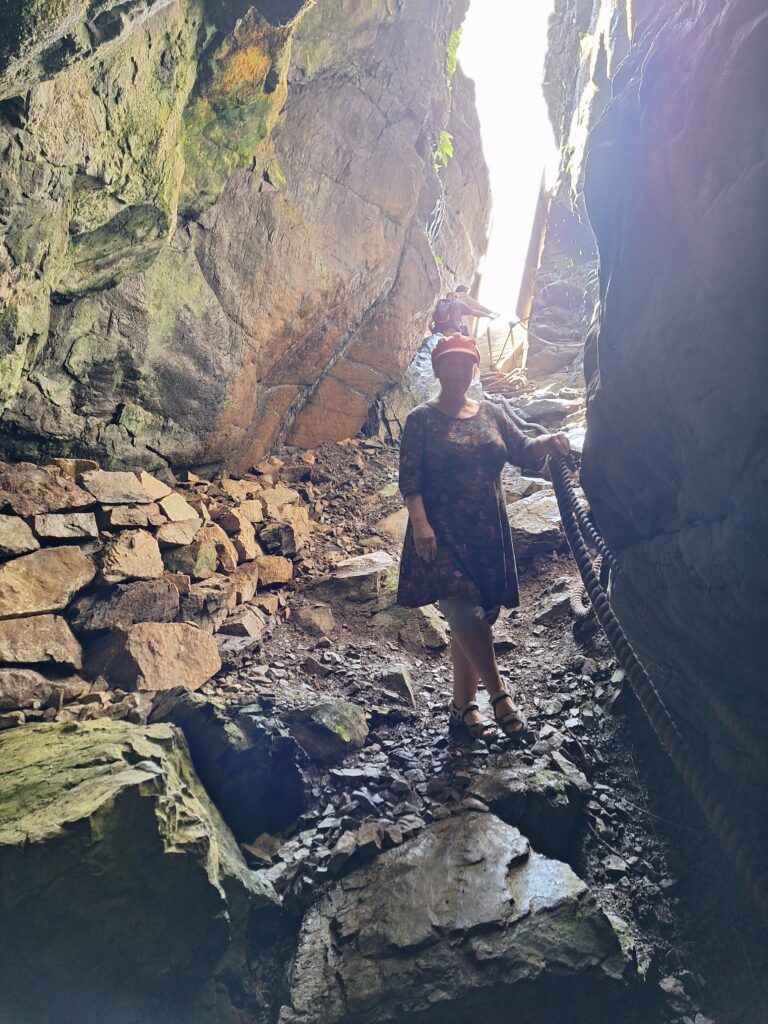
We were at Leka island to see the play ‘Lekamøya og Hestmannen‘, and in that connection guided tours to Solsemgrotta had been set up. It was a great tour, with a good guide. So far, only 10 caves with rock art have been found in Norway, all along the coast between Namdalen and Lofoten. In comparison, thousands of petroglyphs have been found in open air, all over the country.
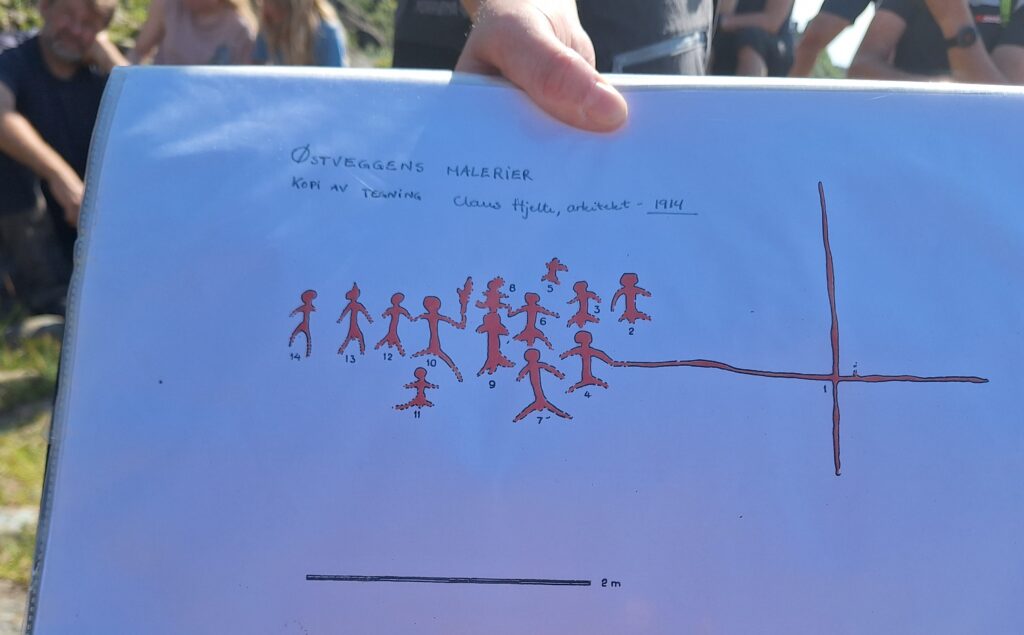
The cave painting on the east wall in Solsemgrotta depicts 13 people, one of whom is holding a large solar cross. 9 of the figures are clearly marked as men. Of those who lack male attributes, there are two who have obviously important functions: One holds the solar cross and the other holds a torch. According to our guide, the non-male figures were first categorized as ‘castrated men’, not as women (!). This probably says more about women’s position in the early 20th century than women’s place in the Bronze Age society. Was there an interest in mass castration of men in the Bronze Age? Were the women invisible in the early agricultural society?Tobatheornottobathe is in no doubt, and concludes that the portrayal of women has never been uninteresting, not even in the Bronze Age.
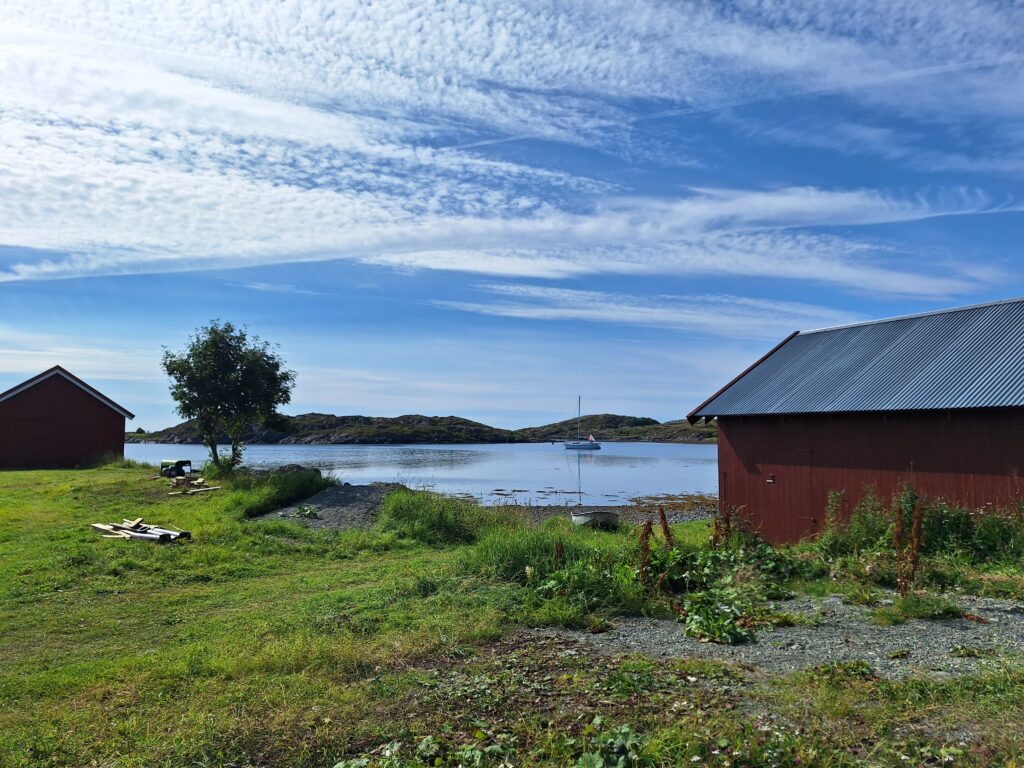
Unfortunately, Solsemgrotta has no pool, so bathing inside the cave is impossible. At Leka, however, there are bathing places everywhere, and of course we took our cave bath at Solsem. Down by the sea we found a beautiful bay, Rullavikstranda, with fine sand, but decided to jump from the not quite finished floating jetty. It’s wise to look around a bit before swimming, as we discovered a jellyfish where we first wanted to jump in. It is best to swim outside the range of the jellyfish, also at Leka.
